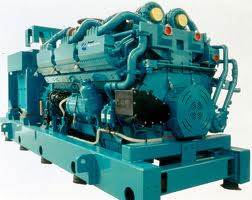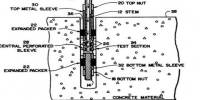Generator Protection Applications
Types of Generator Protection:
Generally there are two types of protection for a power generator
- Stator protection
- Rotor protection
Where produced AC High Voltage by induction method. Huge amount of power delivered from its station windings to the load or consumers. There are using verities types of protection for its safety purpose. Stator protection related with power flow, Induced voltage level, over current protection, Ground fault protection. Rotor protection related with frequency control. [Reference-1]
Generator Protection Applications Phase Fault Protection
Phase faults in a generator stator winding can cause thermal damage to insulation, windings, and the core, and mechanical torsion shock to shafts and couplings. Trapped flux within the machine can cause fault current to flow for many seconds after the generator is tripped and the field is disconnected. [Reference-2]
Primary Protection
Primary protection for generator phase-to-phase faults is best provided by a differential relay. Differential relaying will detect phase-to-phase faults, three-phase faults, and double-phase-to-ground faults. With low-impedance grounding of the generator, some single phase- to-ground faults can also be detected. (Turn-to-turn faults in the same phase cannot be detected, since the current entering and leaving the winding will be the same.) [ Reference-3]
Backup Protection
Backup protection for phase-to-phase and three-phase faults in the generator, unit transformer, and connected system can be provided by a unit-connected differential relay, or a phase distance relay. A definite time delay can provide coordination with all relays that the phase distance relay setting over-reaches.
The protection zone depends on the relay reach, CT placement, and directional setting. When neutral-side CTs are used, the protection includes the generator, and protection will be available when the generator is both on- and off-line. When line-side CTs are used, the protected area depends on the relay offset: the relay can be set to look towards the generator, towards the system, or in both directions. When set to look towards the system, proper setting of the offset will provide some coverage for generator winding faults. [Reference-4]
Ground-Fault Protection
One of the main causes of ground faults is insulation failure. The zero sequence impedance of a generator is usually lower than the positive or negative sequence impedance, and hence, for a solidly grounded generator, the single phase to ground-fault current is greater than the three phase fault current. To limit the ground-fault current, generators are usually grounded through impedance.
Since, on an impedance grounded generator, the fault-current available for sensing a phase-to ground fault can be very small compared to phase-to-phase faults, depending on the location of the fault and the method of grounding the generator, separate ground-fault protection is usually provided.
High-Sensitivity Ground Fault Protection
The high-sensitivity ground fault protection element functions independently of the over-current protection elements. It is intended primarily for detecting ground fault conditions under which the resulting ground currents are relatively small. For isolated or compensated system, this protection function picks up on excessive displacement voltage (ANSI 59). The direction of the ground fault can also be determined. If the directional over-current option is installed, an indication of the faulted phase is also available.
High-Impedance-Grounded Generator
With high-impedance-grounded generators, the generator ground-fault current may not cause severe damage to the generator, but a subsequent ground fault on a different phase will result in a phase-to-phase fault which can cause serious damage. An over voltage relay connected across the grounding impedance to sense zero-sequence voltage can detect faults to within 5%–10% of the stator neutral (90%–95% of the stator winding). In order to detect faults within the area not protected by this relay, an under voltage relay sensitive to the decrease in the third-harmonic voltage at the neutral (device 27TN) can be used to protect the final 10%–30% of the neutral end of the stator. There are several additional schemes for 100% stator ground fault protection.[Reference-5]
Low-Impedance-Grounded Generator
For low-impedance-grounded generators, phase differential protection may provide coverage for ground faults, depending on the fault level and differential relay sensitivity. A differential relay, responsive to zero sequence current, connected across the terminals of the generator and the neutral can provide higher sensitivity and fast operation. One of the requirements of zero sequence differential protection is that the line-side CTs and neutral CT have the same ratio; otherwise, an auxiliary CT with matching ratio must be used.
When a zero sequence source is present on the system (several generators are bussed together and connected to the load through a single transformer), a ground directional differential relay can be applied. The 87GD function can work with a wide range of CT mismatch and without requiring the use of an auxiliary CT. It operates on the product of the triple zero sequence current, the neutral current, and the cosine of the angle between the two. The relay is relatively insensitive to ratio errors and CT saturation.
The multifunction digital relays eliminate the need for an auxiliary CT by providing an internal CT correction factor (entered by the user) in case of CT ratio mismatch. The zero sequence current is computed internally using line-side CTs, and hence, there is no requirement to provide a separate zero-sequence-current input. [Reference-6]
Backup Ground-Fault Protection
Backup protection for ground faults with either type of generator grounding can be provided by an Inverse Time Over-current relay in conjunction with an Instantaneous Over-current relay applied at the generator neutral to detect zero sequence unbalance current which flows during ground faults. [Reference-7]
Over Excitation Protection
When the ratio of the voltage to frequency (volts/Hz) exceeds 1.05 put for a generator, severe overheating can occur due to saturation of the magnetic core of the generator and the subsequent inducement of stray flux in components not designed to carry flux. Such over-excitation most often occurs during start-up or shutdown while the unit is operating at reduced frequencies, or during a complete load rejection which leaves transmission lines connected to the generating station. Failure in the excitation system can also cause over-excitation. Similar problems can occur with the connected transformer.
A Volts/Hz relay (24), with an inverse time characteristic that matches the capabilities of the protected equipment and with definite time set points, is used to protect the generator from over-excitation. Together, these functions can closely match the protection curve of a generator and/or unit transformer. An over-voltage relay function can provide partial backup, but will not be effective at reduced operating frequencies. [Reference-3]
Over Voltage Protection
Generator over-voltage may occur during a load rejection or excitation control failure. In case of hydro-generators, upon load rejection the generator may speed up and the voltage can reach high levels without necessarily exceeding the generator’s V/Hz limit. The over-voltage relay is used to protect the generator from this condition.
Unbalanced Currents
Unbalanced faults and other system conditions can cause unbalanced three-phase currents in the generator. The negative sequence components of these currents cause double-frequency currents in the rotor that can lead to severe overheating and damage. The negative sequence over-current function is provided to protect the unit before the specified limit for the machine is reached.
As established by the ANSI standards, limits are expressed as, where is the negative sequence current in multiples of the tap setting, t is the operating time of the negative sequence relay element in seconds, and K (the time dial setting) is a constant established by the machine design.
The multifunction relay provides the Negative Sequence Over-current function with a tap setting variable from 1A to 5A and a pickup setting variable from 5% to 100%. Also, the value of K can vary from 1 to 95, making this function suitable for any generator size.
fA minimum delay, for this function, set at 12 cycles is used to avoid nuisance tripping. The relays can also provide maximum delay that can be set by the user to reduce the tripping times for modest imbalances. An important feature that helps protect the generator from damage due to recurring imbalances is a linear reset characteristic: when I2 decreases below the pickup value, the trip timer resets to zero linearly to emulate cooling characteristics of the machine. [Reference-4]
Abnormal Frequency Protection
over Frequency Protection
Full or partial load rejection can lead to over-speed of the generator, and hence, over frequency operation. In general, over frequency operation does not pose any serious problems and control action can be taken to reduce the generator speed and frequency to normal without tripping the generator. Generators are shipped with over-speed detectors. An over frequency relay can be used to supplement this over-speed equipment. The multifunction relays provide a two-set point over frequency relay that can be set to alarm or trip on an over frequency condition.
under Frequency Protection
Overloading of a generator, perhaps due to loss of system generation and insufficient load shedding, can lead to prolonged operation of the generator at reduced frequencies. This can cause particular problems for gas or steam turbine generators, which are susceptible to damage from operation outside of their normal frequency band.
The turbine is usually considered to be more restrictive than the generator at reduced frequencies because of possible mechanical resonance in the many stages of the turbine blades. If the generator speed is close to the natural frequency of any of the blades, there will be an increase in vibration. Cumulative damage to the blades due to this vibration can lead to cracking of the blade structure. While load-shedding is the primary protection against generator overloading, under frequency relays (device 81U) should be used to provide additional protection. .[ Reference-3]
Differential Protection of a Power Generator
Relays, which depend on excess of current for their operation, are less sensitive because they cannot make correct distinction between load conditions and minor fault conditions in order to overcome this difficulty differential relays are used.
Differential relay is one that operates when the phase difference of two or more similar electrical quantities exceed a predetermined value. Thus a current differential relay is one that compares the current entering a section of the system with current leaving the section.
Under normal operating conditions, the two currents are equal but as soon as fault occurs, this condition no longer applies. The difference between the incoming and outgoing currents is arranged to flow through relay operating coil. If this difference is equal to or grater than the pick up value the relay will operate and open the circuit breaker and isolate the faulty section.
Any type of relay when connected in a particular way can be made to operate as a differential relay. It is not the relay construction but the way in which relay is connected in a circuit makes it a differential relay. [Reference-4]
Current differential protection
The function is the instantaneous short-circuit protection in a power generator is based on the current differential protection principle (node set). The difference and restraint (stabilization) current is calculated from the phase currents. Optimized digital filters safely attenuate disturbance variables such as a periodic DC elements and harmonics. The high resolution of the measuring variables enables small difference currents (10 % of IN) to be picked up, i.e. a very high sensitivity. A settable restraint characteristic allows optimum adaptation to the conditions of the protected object.
An important setting is the position of the star points of the current transformer sets on both sides of the protected object. In addition, the rated data (SN GEN/MOTOR, UN GEN/MOTOR) of the generator to be protected and the primary and secondary rated currents of the main current transformers are requested on both sides. The setting values refer to these. In addition, they are used for example to determine the primary measured values.
As an additional security measure against unwanted operation when connecting a previously non-energized protected object, the increased pickup value can be switched on when starting up.
The table below shows the setting options of selected parameters. The settings are relevant for the generator and not for the unit (protection group A). [Reference-8]
Stator Short-Circuit Protection
The only problem which may require consideration with this type of protection is the possibility of high voltages in the CT circuits during internal faults, and therefore the need for Thirties limiters across each phase of the CT secondary. It should be noted that this problem is of primary concern when a group of generators are bussed at generator voltage and there are no external impedances to limit the current flow into a fault within a differential zone. This is not generally a problem with the unit generator-transformer arrangement since transformer impedance will limit fault current.
Current transformer secondary voltages are a function of secondary fault current, impedance of the differential operates circuit, and CT tap being used. Since a rigorous calculation of this voltage is complex, two simple rules have been evolved to determine the need for Thirties limiters. These rules are:
When the full CT winding is being used, limiters are not required when the secondary currents are below 84 amperes.
When a lower tap is used on the CT, limiters are not required when the current is less than 84 x (active turns/total turns) 2. It should be noted that when an IJD differential relay is used, the limiting current is 50 amperes.[ Reference-2]
Stator overload protection
The overload protection should protect the stator winding of generators and motors against excessively high continuous current overloads. All load cycles are evaluated by a mathematical model. The basis for the calculation is the thermal effect of the current R.M.S. value. The transformation corresponds =to IEC 60255-8.
The cooling time constant is prolonged automatically, dependent on the current. If the ambient temperature or coolant temperature is fed in through a transducer (MU2) or via the PROFIBUS-DP, the model automatically adapts to the ambient conditions; otherwise a constant ambient temperature is assumed. .[ Reference-2]
Over voltage protection
This protection prevents insulation faults as a result of high voltage. Optionally the maximum phase-to-phase voltages or phase-to-earth voltages (in low-voltage generators) can be evaluated. In the phase-to-phase voltages, the measuring result is independent of the zero point displacements resulting from earth-faults. The protection function is designed in two stages.
The setting of the limit values and delay times of the over-voltage protection depends on the speed at which the voltage regulator can regulate voltage fluctuations. The protection may not intervene in the regulating process of the voltage regulator when it is operating trouble-free. The two stage characteristic must therefore always be above the voltage time characteristic of the regulating process.
The long-time stage U> and TU> should intervene in the case of steady-state over-voltages. It is set to about 110 to 115 % UN and to 1.5 to 5s, depending on the regulator speed. In the event of a full load disconnection of the generator, the voltage first rises according to the transient voltage and is reduced to its rated value by the voltage regulator afterwards. The U>> stage is generally set as a short-time stage so that the transient process in full load shutdown does not lead to tripping. About 130 % UN – with a delay TU>> ranging from zero to 0.5s – are usual (for example) for U>>.
[Reference-9]
Over excitation protection
Over-excitation protection serves to detect an impermissibly high induction (proportional to U/f) in generators or transformers which leads to thermal overloading. This danger can occur in start-up processes, in full load disconnections, in “weak” systems and in separate island operation.
The inverse-time characteristic is set with the manufacturer data by way of 8 points. A definite time alarm stage and a short-time stage can be used additionally. Apart from the frequency, the maximum of the three phase-to-phase voltages is used for calculating the quotient U/f. The monitor-able frequency range is between 11 and 69 Hz.
The over-excitation protection contains two-staged characteristics and one thermal characteristic for approximate simulation of the heating of the protected object due to over-excitation. On exceeding of an initial pickup threshold (alarm stage U/f), a time stage TU/f > is started, at the end of which an alarm message is output. The limit value of induction in relation to the rated induction (B/BN) specified by the protected object manufacturer forms the basis for setting the limit value U/f >.[Reference-1]
Ground Fault Protection
The following information and examples cover three impedance levels of grounding: low, medium, and high. A low impedance grounded generator refers to a generator that has zero or minimal impedance applied at the Wye neutral point so that, during a ground fault at the generator HV terminals, ground current from the generator is approximately equal to 3 phase fault current. A medium impedance grounded generator refers to a generator that has substantial impedance applied at the wye neutral point so that, during a ground fault, a reduced but readily detectable level of ground current, typically on the order of 100-500A, flows. [Reference-1]
A high impedance grounded generator refers to a generator with a large grounding impedance so that, during a ground fault, a nearly undetectable level of fault current flows, necessitating ground fault monitoring with voltage based (e.g., 3rd harmonic voltage monitoring and fundamental frequency neutral voltage shift monitoring) relays. The location of the grounding, generator neutral(s) or transformer, also influences the protection approach.
The location of the ground fault within the generator winding, as well as the grounding impedance, determines the level of fault current. Assuming that the generated voltage along each segment of the winding is uniform, the pre-fault line-ground voltage level is proportional to the percent of winding between the fault location and the generator neutral, VFG in Figure. Assuming an impedance grounded generator where (Z0, SOURCE and ZN)>>ZWINDING, the current level is directly proportional to the distance of the point from the generator neutral [Fig. 2.1], so a fault 10% from neutral produces 10% of the current that flows for a fault on the generator terminals. While the current level drops towards zero as the neutral is approached, the insulation stress also drops, tending to reduce the probability of a fault near the neutral.
More Complete Machine Protection
More and more demands are being placed on the older existing units. Many of these units are not fully protected with respect to present practice. When these units were initially put into service years ago the technology of the time did not offer the protective functions that are available today.
The following protective functions are included in a typical digital generator protection system:
- Stator Differential
- Current Unbalance
- Loss of Excitation
- Reverse Power
- Time Over-current with Voltage Restraint
- 100 % Stator Ground
- Over-excitation
- Over-voltage
- Over and Under frequency
- Voltage Transformer Fuse Failure (VTFF)
- Accidental Energizing
Many existing units are not fully equipped with all these protective functions and in many instances the original protective functions are not sufficiently sensitive or stable. Protective functions such as 100% Stator Ground Fault, Over-Excitation, and Accidental Energizing would be good additions to complement the existing generator protection scheme. Recent incidents which have occurred in the industry that have caused damage and forced outages could have been prevented or mitigated if this protection had been installed. Improved protection will help in extending the life of these older generators by minimizing fault clearing times and the duration of exposure to abnormal operating conditions. Damage due to the incidents such as accidental energizing, which are potentially devastating, can be eliminated with proper application of this protection feature. [Reference-7]
Reference:
1. http:// www. google.com.
2.http://www.wikipedia.org./ wiki/Special:Search?search=stator+overload+protection&go=Go
3. P. K. Dash, O. P. Malik, and G. S. Hope, “Digital differential protection of a generating unit scheme and real-time test results,” IEEE Transactions on Power Apparatus and Systems, vol. PAS-96, no. 2, March/April 1977]
4. H. Tao and I. F. Morrison, “Digital winding protection for large generators,” J. Electr. Electron. Eng. Aust., 3 (1983), 316-321.]
5.P. K. Dash, O. P. Malik, and G. S. Hope, “Fast generator protection against internal asymmetrical faults,” IEEE Transactions on Power Apparatus and Systems, vol. PAS-96, no. 5, September/October 1977.]
6.M. S. Sachdev and D. W. Wind, “Generator differential protection using a hybrid computer,” IEEE Trans. Power Apparatus System, PAS-92 (1973) 2063-207].
7.Gabriel Benmouyal, Serge Barceloux, and Rolland Pelletier, “Field experience with a digital relay for synchronous generators,” IEEE Transactions on Power Delivery, vol. 7, no. 4, October 1992]
8. C. J. Mozina, IEEE Tutorial on the Protection of Synchronous Generators, IEEE Tutorial Course, IEEE Power Engineering Society Special Publ., no. 95 TP102, 1995.]
9. A. I. Megahed, Student Member, IEEE, and O. P. Malik, Fellow, IEEE, “An Artificial neural network based digital differential scheme for synchronous generator stator winding protection,” IEEE Transactions on Power Delivery, vol 14, January 1999.]
Some are parts:
















